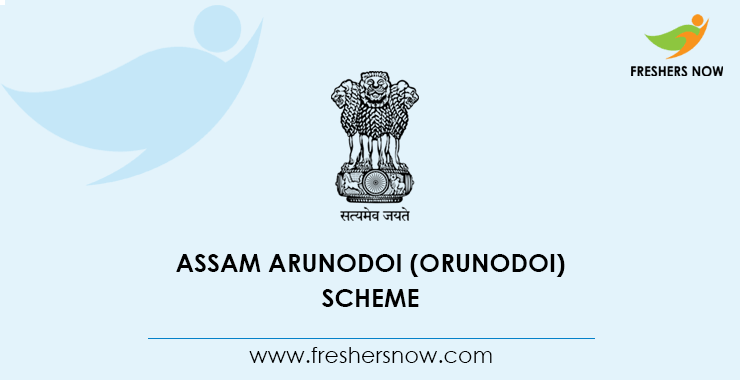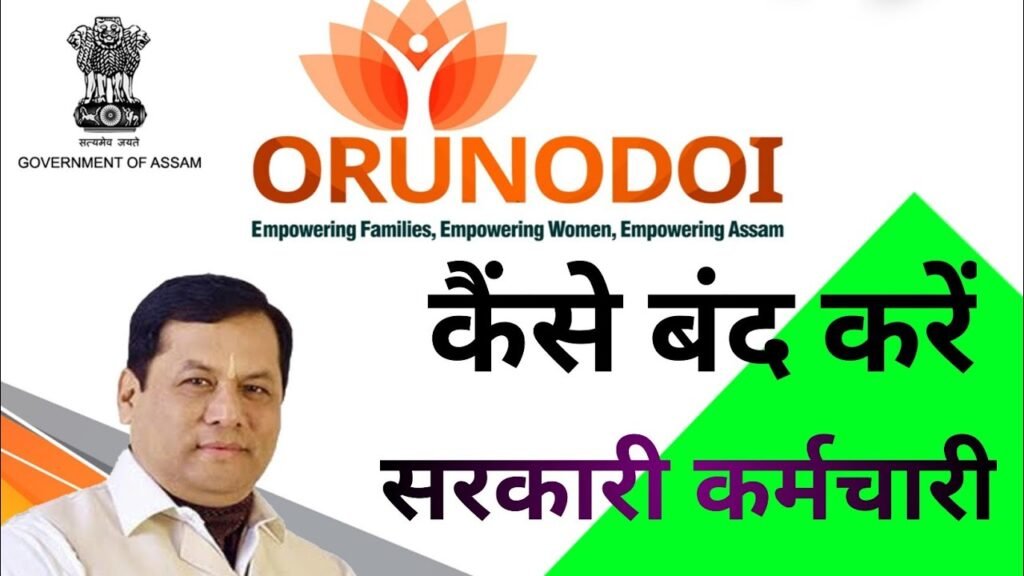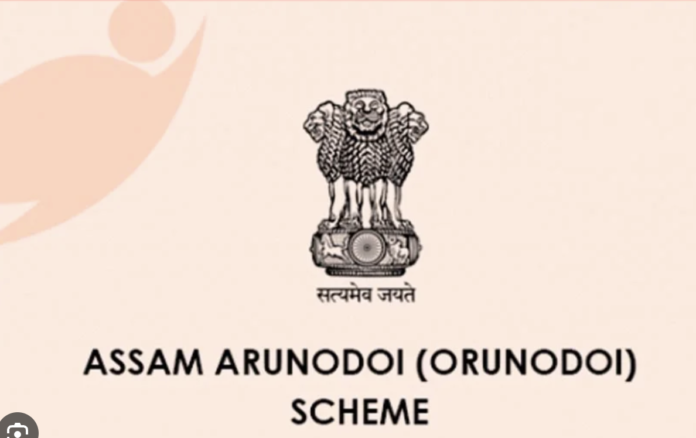Unlock the details of Arunodoi Scheme eligibility criteria and exclusion factors in Assam with this comprehensive guide. Learn who qualifies for the Arunodoi Scheme, discover the socio-economic parameters, and understand the residency requirements. Stay informed about the latest updates to ensure you meet all criteria for the Arunodoi Scheme, the transformative initiative designed to uplift families in Assam. Navigate the application process with confidence, ensuring your eligibility for the Arunodoi Scheme and the potential positive impact it can bring to your household.
Table of Contents
I. Introduction
Background
Assam, a state in northeastern India, is characterized by a diverse socio-economic landscape. While the region boasts rich cultural heritage and natural resources, certain segments of the population face economic vulnerabilities that hinder their overall well-being. Recognizing the need for targeted welfare initiatives, the government of Assam introduced the Arunodoi scheme, a transformative program designed to uplift the economically underprivileged.
Need for Targeted Welfare Programs
In the broader context of India’s socio-economic challenges, Assam grapples with poverty and inequality. Rural communities, in particular, face hurdles in accessing basic amenities and opportunities for socio-economic development. The Arunodoi scheme aims to address these issues by providing financial assistance directly to eligible families, thereby promoting financial inclusion and empowering individuals to break the cycle of poverty.
II. Objectives of the Arunodoi Scheme
Poverty Alleviation
At the heart of the Arunodoi scheme lies the core objective of poverty alleviation. By offering monthly cash transfers to identified beneficiaries, the program seeks to provide immediate relief to families struggling with economic hardships. This approach recognizes the urgency of addressing poverty at its roots and emphasizes the importance of direct financial assistance in improving living standards.
Financial Inclusion
One of the key pillars of the Arunodoi scheme is to foster financial inclusion among marginalized communities. By directly transferring funds to the female head of the family, the program ensures that women play a central role in managing household finances. This not only empowers women but also contributes to the overall economic development of communities, breaking gender-based financial disparities.
Empowering Economically Vulnerable Families
Beyond the immediate relief provided through cash transfers, the Arunodoi scheme seeks to empower vulnerable families in the long term. Through targeted assistance, the program aims to create a pathway for families to overcome financial barriers, enabling them to access education, healthcare, and other essential services. By addressing the root causes of economic vulnerability, the scheme aspires to bring about sustainable change.
Improving Overall Quality of Life:
The holistic approach of the Arunodoi scheme extends beyond monetary benefits. Recognizing that a high quality of life encompasses various factors, the program aims to create a conducive environment for families to thrive. By alleviating financial stress, the scheme indirectly contributes to improved health, education, and overall well-being, fostering a positive cycle of development.
III. Key Features of the Arunodoi Scheme
Financial Assistance
The cornerstone of the Arunodoi scheme is the provision of monthly cash transfers to eligible beneficiaries. This financial assistance is a lifeline for families facing economic challenges, offering them the means to meet basic needs and invest in the future. The decision to transfer funds directly to the female head of the family reflects a strategic approach to empower women and ensure effective utilization of resources within households.
Eligibility Criteria
Identifying the right beneficiaries is crucial for the success of the Arunodoi scheme. The eligibility criteria are carefully crafted to target those who are genuinely in need. Parameters for inclusion and exclusion are established through a comprehensive assessment process, taking into account various socio-economic factors. This ensures that the benefits reach those who need them the most, aligning with the program’s objectives.
Application Process
To streamline the distribution of benefits, the Arunodoi scheme implements a transparent and accessible application process. Families interested in availing themselves of the scheme’s benefits undergo a registration and documentation process. This ensures that the assistance is directed to those who meet the eligibility criteria, while also incorporating measures to prevent fraudulent claims. Transparency and accountability are prioritized at every stage of the application process.
Funding Mechanism
Sustainable funding is essential for the continuous operation of the Arunodoi scheme. The government allocates a budget for the program, reflecting its commitment to addressing economic vulnerabilities in the region. Additionally, partnerships with financial institutions play a crucial role in ensuring the seamless transfer of funds to beneficiaries. This collaborative approach enhances the efficiency of the scheme and maximizes the impact of financial assistance on the ground.
Certainly, creating a comprehensive application process is crucial for the success of a welfare program like the Arunodoi scheme. Below is a sample application process guide for potential beneficiaries:
IV. Eligibility Criteria
Before initiating the application process, it’s essential to ensure that you meet the eligibility criteria. To qualify for the Arunodoi Scheme, applicants must:
- Be residents of Assam.
- Belong to economically vulnerable families.
- Fulfill the criteria for identification based on socio-economic factors.
- Comply with inclusion and exclusion parameters set by the program.
Exclusion Criteria:
- Income Threshold: Individuals or families exceeding a certain income threshold may not be eligible for the scheme. The program often targets economically vulnerable households.
- Not Meeting Socio-Economic Criteria: The scheme may have specific criteria related to socio-economic factors, and those not meeting these criteria may not be eligible.
- Residency Requirements: The scheme is typically designed for residents of Assam. Non-residents may not qualify for the program.
- Incomplete Documentation: Failure to provide necessary and accurate documentation during the application process might lead to ineligibility.
- Other Government Benefits: Individuals or families already receiving certain government benefits or participating in other welfare programs might be excluded.
V. Documentation
To streamline the application process, ensure you have the following documents ready:
- Residence Proof: Any government-issued document establishing your residency in Assam.
- Income Certificate: A document verifying the economic vulnerability of your family.
- Identification Proof: Aadhar card, voter ID, or any other government-issued identification.
- Bank Account Details: Provide accurate details for direct fund transfer.
VI. Application Steps
Step 1: Registration
Begin by registering for the Arunodoi Scheme. This can be done through:
- Online Portal: Visit the official Arunodoi Scheme website and fill in the registration form. Ensure all details are accurate and up-to-date.
- Designated Centers: Physical registration centers may be set up for those without online access. Visit these centers with your documents to register.
Step 2: Document Verification
Once registered, your documents will undergo verification. This may involve:
- Submission of Physical Copies: If registered online, submit physical copies of necessary documents to the designated centers.
- Verification Interviews: In some cases, a verification interview may be conducted. Be prepared to answer questions regarding your family’s socio-economic status.
Step 3: Application Review
After document verification, your application will undergo review. This involves:
- Cross-Checking Eligibility: Ensure your family meets the eligibility criteria set by the Arunodoi Scheme.
- Addressing Discrepancies: If any discrepancies are found, you may be required to provide additional information.
Step 4: Approval
Upon successful review, your application will be approved. You will be notified through:
- SMS: Receive a confirmation SMS on the mobile number provided during registration.
- Online Portal: Check the official portal for your application status.
Step 5: Fund Transfer
Once approved, the financial assistance will be directly transferred to the bank account details provided during registration.
- Confirmation: Receive confirmation of fund transfer through SMS or check the online portal.
- Bank Statement: Verify the credited amount in your bank account.

VII. Important Points to Remember
- Accuracy is Key: Ensure all information provided is accurate and matches the submitted documents.
- Timely Updates: Keep your contact details updated to receive timely notifications.
- Beware of Fraud: Be cautious of fraudulent activities. The Arunodoi Scheme does not involve any third-party payments or intermediaries.
VIII. Need Assistance?
If you face any issues during the application process or have queries, feel free to contact:
- Assam Orunodoi Scheme Support Email :- orunodoidbt@gmail.com.
- Department of Finance Assam Contact Number :- 0361 2237054.
- Department of Finance Assam Contact Email :- samirksinha@gov.in.
This application guide serves as a comprehensive roadmap for potential beneficiaries, ensuring a smooth and transparent process for availing benefits under the Arunodoi Scheme.
IX. Implementation Process
Role of Government Agencies
Efficient and effective implementation of the Arunodoi scheme requires close collaboration between various government agencies. A dedicated department oversees the administration of the program, working in tandem with local authorities to ensure the seamless flow of information and resources. Clear delineation of responsibilities and robust communication channels are established to address any challenges that may arise during the implementation phase.
Timeline for Implementation
The rollout of the Arunodoi scheme is conducted in carefully planned phases. This phased approach allows for a systematic and organized implementation, minimizing disruptions and ensuring that resources are allocated where they are needed most. Monitoring and evaluation mechanisms are integrated into each phase, providing valuable insights that contribute to the program’s continuous improvement.
X. Impact Assessment
Social and Economic Impact
As the Arunodoi scheme unfolds, its impact on both the social and economic fabric of Assam becomes increasingly evident. Families receiving monthly cash transfers experience a tangible improvement in their living standards. The program’s focus on financial inclusion empowers women to actively participate in household decision-making, contributing to the overall socio-economic development of communities.
Challenges and Mitigation Strategies
While the Arunodoi scheme is designed to bring about positive change, challenges may arise during its implementation. Potential issues such as identification errors, delays in fund transfer, or resistance from certain communities are acknowledged and addressed through proactive mitigation strategies. Regular assessments and feedback mechanisms are in place to identify challenges promptly and implement corrective measures.
XI. Success Stories
Case Studies
The true impact of the Arunodoi scheme is best illustrated through real-life success stories. Case studies highlight the transformative journey of families that have benefited from the program. These narratives showcase how financial assistance has not only alleviated immediate economic burdens but has also acted as a catalyst for long-term positive change. By sharing these success stories, the program aims to inspire and motivate others to overcome similar challenges.
Positive Outcomes and Testimonials
Beyond statistics and figures, positive outcomes and testimonials provide a human perspective on the Arunodoi scheme. Beneficiaries express gratitude for the program’s support and share their experiences of how it has positively influenced their lives. These testimonials serve as a testament to the program’s effectiveness, creating a ripple effect of hope and optimism within the community.

XII. Future Prospects
Expansion of the Arunodoi Scheme
The success of the Arunodoi scheme lays the groundwork for its expansion. Plans are underway to increase coverage and reach more families in need. The government remains committed to refining the program based on lessons learned and feedback received during the initial phases. This commitment to expansion reflects a dedication to creating a more inclusive and economically stable society in Assam.
Incorporating Feedback for Continuous Improvement
Feedback from beneficiaries, implementing agencies, and other stakeholders is actively sought and valued. Continuous improvement is a cornerstone of the Arunodoi scheme, and adjustments are made based on the insights gained from ongoing assessments. This iterative process ensures that the program remains responsive to the evolving needs of the community it serves.
XIII. Acknowledging Challenges and Refinement
Learning from Challenges
Acknowledging challenges is a vital aspect of any welfare program. The Arunodoi scheme recognizes that not every aspect of its implementation will be flawless. Challenges are seen not as roadblocks but as opportunities to learn and refine the program further. By actively addressing challenges, the government ensures that the Arunodoi scheme remains adaptive and resilient in its mission to uplift vulnerable families.
Continuous Refinement
The commitment to continuous refinement is embedded in the Arunodoi scheme’s ethos. Regular reviews, stakeholder consultations, and data-driven assessments contribute to the ongoing evolution of the program. This iterative process allows for the incorporation of best practices, the elimination of inefficiencies, and the introduction of new strategies to enhance the overall impact of the scheme.
XIV. Adapting to Changing Socio-Economic Dynamics
Economic Trends and Societal Changes
The success of the Arunodoi scheme is contingent on its ability to adapt to changing economic trends and societal dynamics. As Assam undergoes transformations in various sectors, the program remains agile, ensuring that its interventions align with the evolving needs of the population. Flexibility in approach and a forward-looking mindset enable the Arunodoi scheme to remain a relevant and effective tool in addressing socio-economic challenges.
Leveraging Technology for Efficiency
In an era characterized by technological advancements, the Arunodoi scheme leverages digital tools to enhance its efficiency. Online application processes, data analytics for targeted interventions, and digital payment systems contribute to the streamlined and transparent implementation of the program. Embracing technology ensures that the Arunodoi scheme keeps pace with contemporary solutions, maximizing its impact on the ground.
XV. Collaborative Efforts for Sustainable Impact
Public-Private Partnerships
Sustainable impact requires collaborative efforts. The Arunodoi scheme actively engages in public-private partnerships to strengthen its reach and effectiveness. By partnering with businesses, non-profit organizations, and educational institutions, the program taps into a diverse pool of resources, expertise, and networks. This collaborative approach amplifies the positive impact of the Arunodoi scheme, fostering a collective commitment to social and economic development.
Community Involvement and Empowerment
Communities are not just recipients but active participants in the success of the Arunodoi scheme. Empowering local communities through awareness programs, skill-building initiatives, and community-driven projects enhances the sustainability of the program. By fostering a sense of ownership and involvement, the Arunodoi scheme becomes a catalyst for self-reliance and community-led development.
XVI. Looking Ahead: Vision for Inclusive Growth
Inclusive Growth as a North Star
The Arunodoi scheme is not just a welfare program; it is a catalyst for inclusive growth. Looking ahead, the vision is to create an environment where every individual, irrespective of socio-economic background, has the opportunity to thrive. Inclusive growth becomes the North Star guiding the Arunodoi scheme’s future endeavors, shaping policies that uplift the most marginalized and fostering an equitable society.
Engaging in Global Best Practices
The global community offers a wealth of insights and best practices in welfare and development. The Arunodoi scheme looks to engage with global forums, learn from successful models around the world, and adapt proven strategies to the unique context of Assam. This global perspective enriches the program’s approach, ensuring that it remains at the forefront of innovative solutions for socio-economic development.
XVII. Public Awareness and Advocacy
Communicating Impact
Public awareness plays a pivotal role in the success of the Arunodoi scheme. Effectively communicating the program’s impact, success stories, and future vision builds public trust and support. Engaging in advocacy campaigns ensures that the community is well-informed about the benefits of the program, fostering a sense of collective responsibility for the well-being of vulnerable families.
Mobilizing Support
Mobilizing support extends beyond government initiatives. The Arunodoi scheme actively encourages civil society, media, and influencers to become advocates for socio-economic development. By creating a groundswell of support, the program becomes a societal movement, transcending political boundaries and ensuring that the welfare of vulnerable families remains a shared priority.
XVIII. Conclusion: A Transformative Journey
In conclusion, the Arunodoi scheme represents a transformative journey towards a more equitable and prosperous Assam. Its multifaceted approach, commitment to continuous improvement, and adaptability to changing dynamics position it as a beacon of hope for vulnerable families. As the program evolves, the collective efforts of government, communities, and partners contribute to a legacy of positive change, fostering a future where no family is left behind in the journey towards progress and prosperity.
XIX. Conclusion
Recap of Significance
In conclusion, the Arunodoi scheme emerges as a significant initiative in the socio-economic landscape of Assam. Its multifaceted approach to poverty alleviation, financial inclusion, and empowerment sets the stage for a more equitable and prosperous future. By directly addressing the root causes of economic vulnerability, the program stands as a beacon of hope for families striving for a better quality of life.
Call to Action
The success of the Arunodoi scheme relies not only on government efforts but also on the collective commitment of society. A call to action is extended to individuals, communities, and organizations to actively support and contribute to the ongoing initiatives. By working together, we can amplify the positive impact of the Arunodoi scheme and create a lasting legacy of socio-economic development in Assam.


